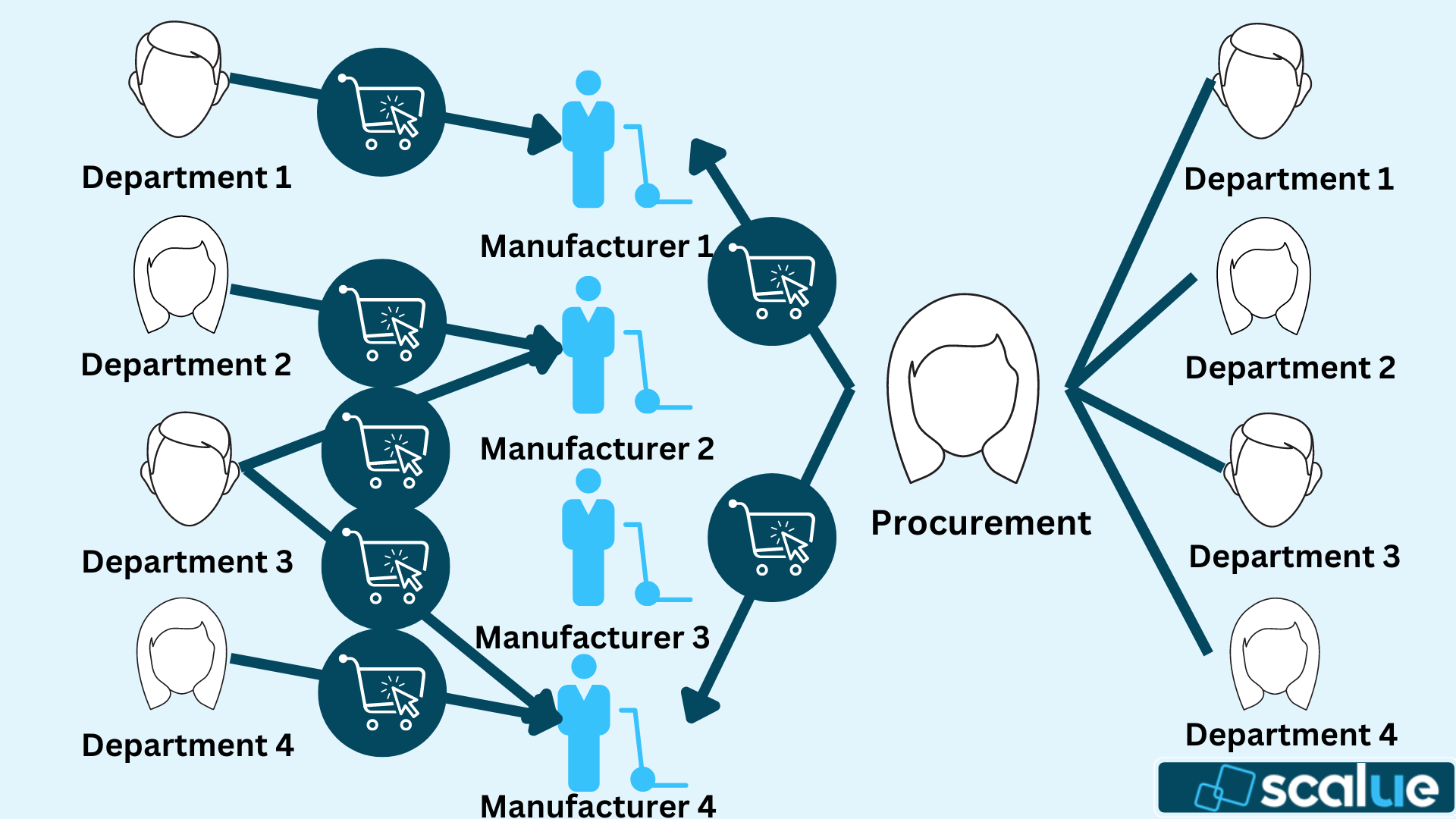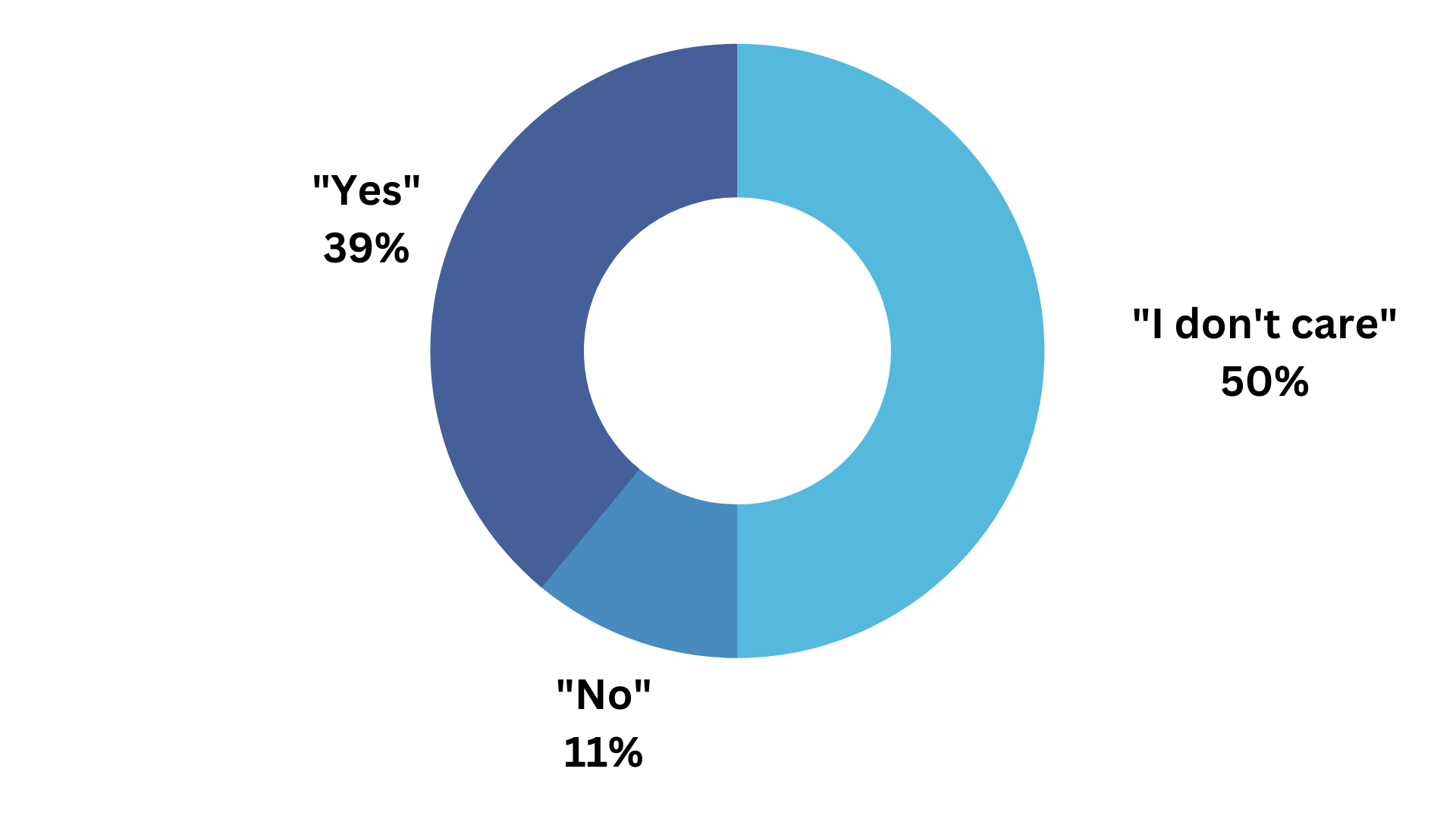Existing customer? Login
Blog
February 14th, 2023
Maverick Buying: How to recognize and avoid "Shadow Spend"
 Thomas Teichmann
Thomas Teichmann
When individual departments order goods or services without consulting the purchasing department, this is known as maverick buying. The consequences of such "shadow spend" are usually higher costs and chaotic procurement. But how can I recognize maverick buying into my company? And how can I effectively prevent it? We have the answers.
Maverick buying - the most important facts in brief
- Maverick buying describes the unauthorized procurement of goods and services by individual departments without involving the purchasing department in the process.
- The two main causes of maverick buying are a lack of trust in the purchasing department and a lack of purchasing know-how in the specialist departments.
- "Shadow Spend" can be identified and measured in various ways within the company, for example by the maverick buying rate.
- In the worst case, maverick buying causes a company's procurement costs to rise sharply and the relationship with existing suppliers to suffer.
- The best way to avoid maverick buying is through open communication and clear guidelines from the purchasing department. In addition, the use of procurement software such as SCALUE Essentials is recommended.
What is Maverick Buying?
The word maverick comes from the English language and means something like "loner" or "free spirit". Accordingly, maverick buying refers to the circumstance when individual departments order goods or services on their own, without involving or at least informing the purchasing department. In German-speaking countries, maverick Buying also goes with the name "Shadow Spend". Since uncontrolled procurement can quickly lead to higher costs, maverick buying should be avoided in the company at all costs.
A little anecdote on the side: The term Maverick is derived from the cattle breeder Samuel A. Maverick, who lived in the USA in the middle of the 19th century. He is said not to have branded his cattle, contrary to the norm at the time, and thus coined the term Maverick.

How does Maverick Buying occur in a company?
If Maverick Buying occurs in a company, the reasons for it can lie in the respective specialist departments as well as in the purchasing department itself. The most common cause within the departments is dissatisfaction with the performance of the purchasing department. This dissatisfaction can usually be traced back to lengthy and complicated processes, but also to insufficient flexibility on the part of purchasing employees. To counteract this, it is important that the purchasing department discloses its processes as well as decisions and communicates them sufficiently. That is the only way to create enough trust between purchasing and other departments to effectively avoid maverick buying.
At the same time, the respective departments should also admit their lack of knowledge of the topic of purchasing. After all, as a rule, untrained personnel simply lack in-depth know-how, for example in the total cost of ownership or so-called C-parts management. Even with the noblest of intentions, this lack of knowledge can lead to uncontrollably rising costs and other significant problems within the company.
We wanted to find out in a survey how great this lack of knowledge currently in many small and medium-sized companies is. For this purpose, we asked purchasing managers and decision-makers in purchasing whether they measure and know their maverick buying rate. Here is the - very surprising - result:

The three Maverick Buying types
But be careful: not all Maverick Buying is the same. Basically, there are three different basic forms of "maverick buying" that need to be distinguished from each other:
- Procurement processes bypass the purchasing department: In type 1 of maverick buying, individual employees, for example from the IT or sales department, procure goods or services completely independently. In this case, the purchasing department is completely bypassed.
- The purchasing department is involved too late: In other cases, the purchasing department is involved, but only at too late a stage. Then it is usually no longer possible to negotiate good contract conditions with the help of a purchaser. In this case, purchasing only acts on an operational level.
- Existing contracts are not used: In the third type of maverick buying, the departments do use existing suppliers, but without taking advantage of the pre-negotiated conditions. In this case, higher costs are almost always incurred.
Recognizing and measuring maverick buying - this is how it works
Maverick buying can be detected in the company in various ways. A first sign is, for example, when invoices appear that cannot be assigned to an order placed by the purchasing department. Furthermore, the alarm bells should ring in the purchasing department if, for example, the invoice price or the payment conditions deviate significantly from the respective framework agreement. All these indications suggest that maverick buying is being practiced in the company.
However, maverick buying is not only easy to identify within a company, but it can also be measured in concrete terms. These four key figures will help you to do so:
- The maverick buying rate provides information on the proportion of orders that are placed without consulting the purchasing department. The easiest way to determine this is to compare the purchasing volume with the invoice volume with suppliers. The lower the maverick buying rate, the better.
- The contract utilization rate tells you how many orders existing contracts and their respective terms and conditions were applied to.
- The price compliance rate is the counterpart to the contract utilization rate. It indicates how many orders were placed without regard to existing contract terms and conditions.
- The condition compliance ratio expresses the relationship between the originally negotiated contract conditions and the actual conditions.
The consequences of "wild buying"
Maverick buying usually has devastating consequences for a company. On the one hand, costs usually rise rapidly because price advantages from framework agreements are no longer used or price comparisons are not even made. Secondly, maverick buying leads to more frequent complaints, which are not always fully refundable as a result. In all cases, the company's procurement costs rise sharply, which both reduces profits and jeopardizes liquidity.
But that's not all. In addition to the cost risk, maverick buying also causes operational problems. For example, "wild buying" results in significant additional work for you in terms of goods receipt as well as accounting and invoice verification. In addition, maverick buying can lead to a significant deterioration in the relationship with long-standing suppliers and, in the worst case, they may even terminate the cooperation.
Avoid Maverick Buying - with SCALUE Essentials
As you can see, maverick buying should be avoided at all costs within the company. Otherwise, both the liquidity of the company and the relationship with suppliers will suffer. One thing is particularly important for avoiding maverick buying: trust in your purchasing department. To ensure this, processes in purchasing must be presented transparently and communicated openly. At the same time, however, the purchasing department must also better monitor procurement in the company and quickly make maverick buying visible.
This is exactly what the intuitive SCALUE Software-as-a-Service app helps you to do. Thanks to the universally applicable API interface, you have all your purchasing data visible and categorized in no time at all. This way, you can always see exactly where costs can be saved and where orders may have been placed single-handedly. Furthermore, the easy-to-use SCALUE web app helps you visualize your own processes quickly and easily. On this basis, you can better communicate purchasing decisions to other departments and justify them more clearly. This strengthens trust between all departments and, at best, avoids maverick buying in your company.

How SCALUE can help you? Schedule a free demo now!
Learn more on our blog: Get More Insights
Follow us on LinkedIn: Get more Content